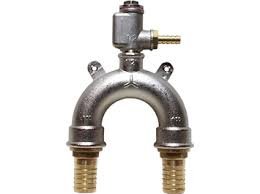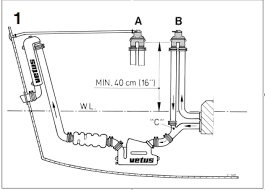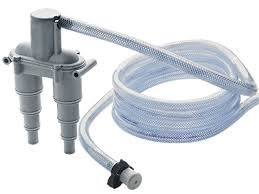HenryD
Senior Member
- Joined
- Dec 16, 2012
- Messages
- 477
- Location
- USA
- Vessel Name
- Seven Tenths (sold)
- Vessel Make
- Mirage / Great Harbour 47
I found a few ounces of water in my engine room today. Looking for a reason, I notice two of my ceiling panels in the engine room have wet edges. The panels are finished wood so the wet edges show some warpage.
When I take the panels down, there is signs of water and salt. I am thinking my problem is coming from a vented loop / vacuum breaker that is mounted above the ceiling panel.
The siphon break / vacuum breaker is a Scot Pump 3/8" - a plastic basket with spring/ball inside. Are there better products to use for this? I am considering building a box for around the vented loop so it cannot put water into the space above the ceiling panel.
http://www.boatswainslocker.com/contentonly.aspx?file=specpages/VB38.pdf
When I take the panels down, there is signs of water and salt. I am thinking my problem is coming from a vented loop / vacuum breaker that is mounted above the ceiling panel.
The siphon break / vacuum breaker is a Scot Pump 3/8" - a plastic basket with spring/ball inside. Are there better products to use for this? I am considering building a box for around the vented loop so it cannot put water into the space above the ceiling panel.
http://www.boatswainslocker.com/contentonly.aspx?file=specpages/VB38.pdf



